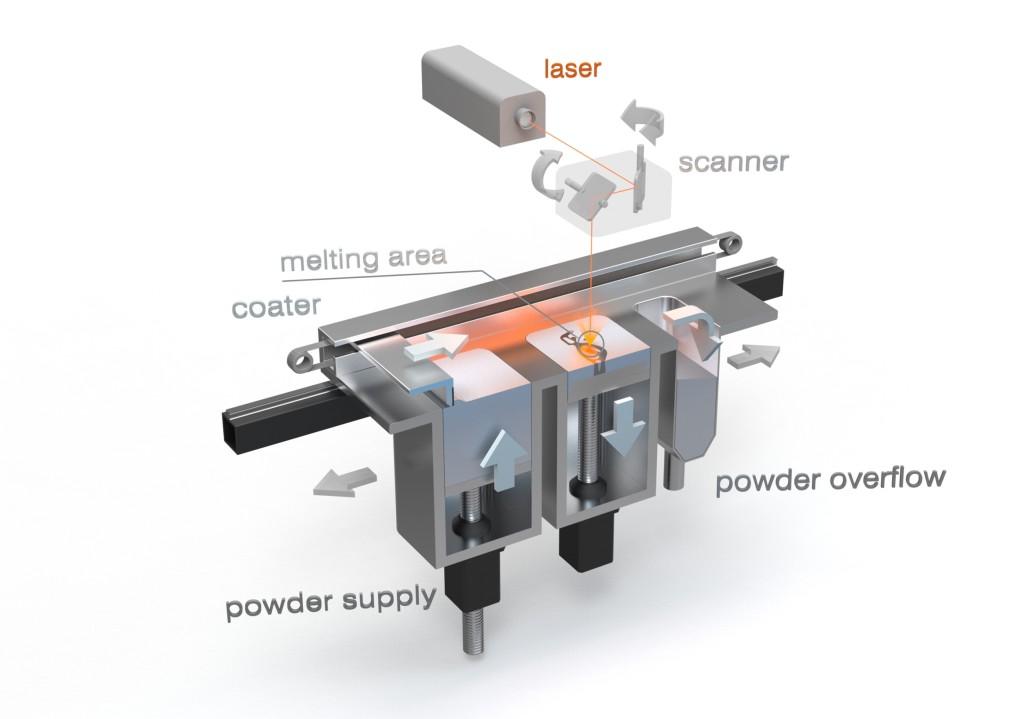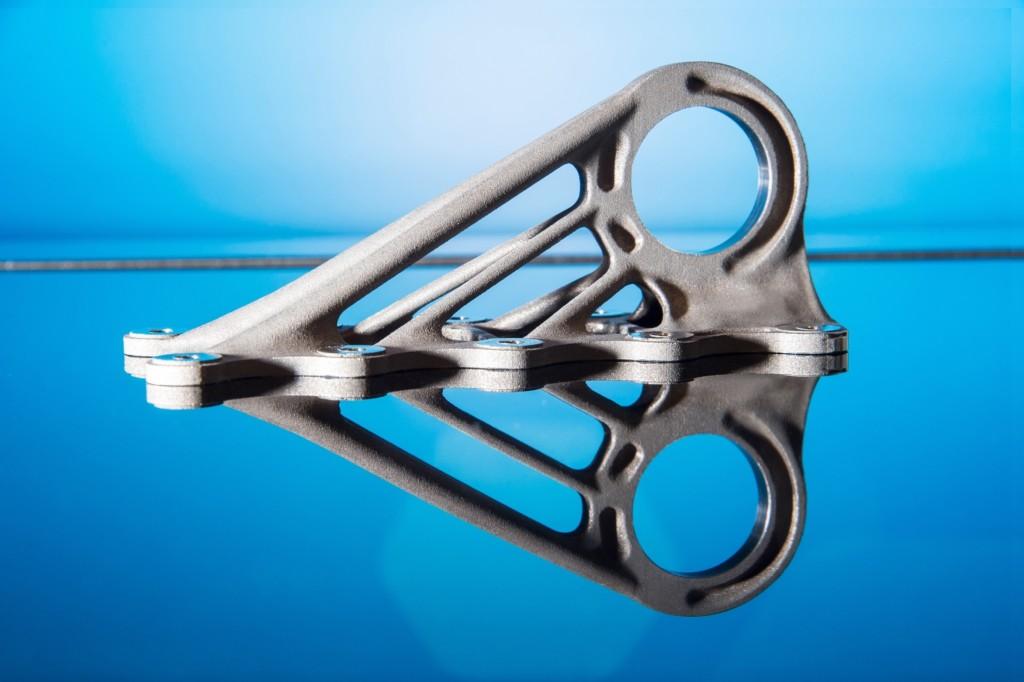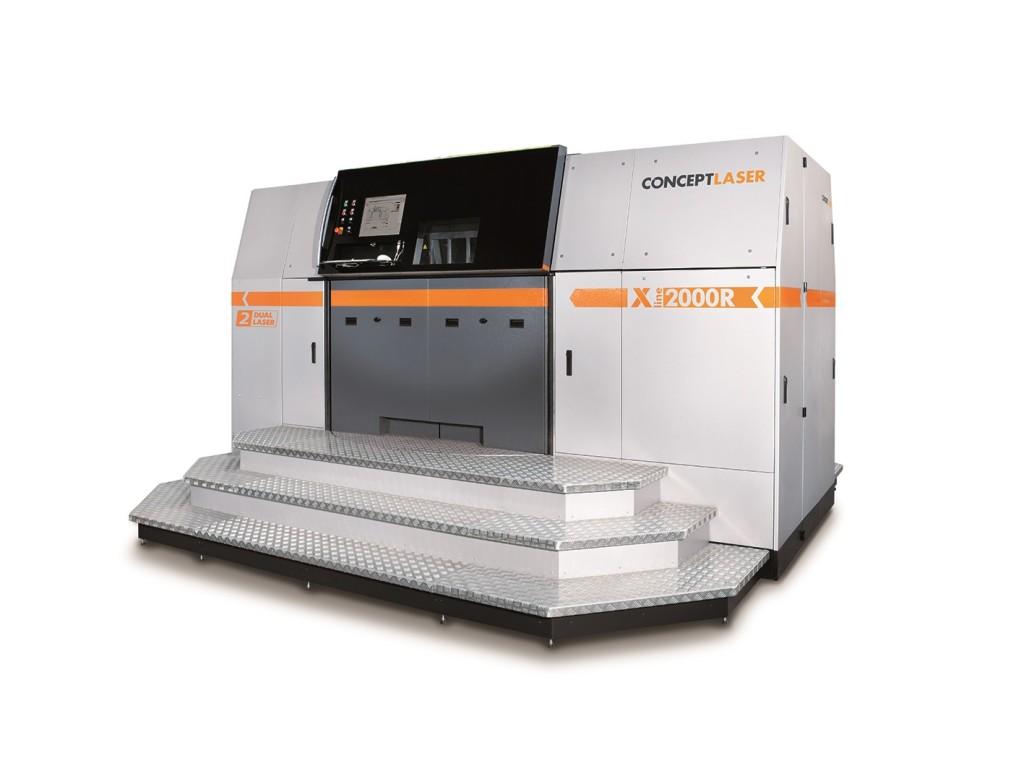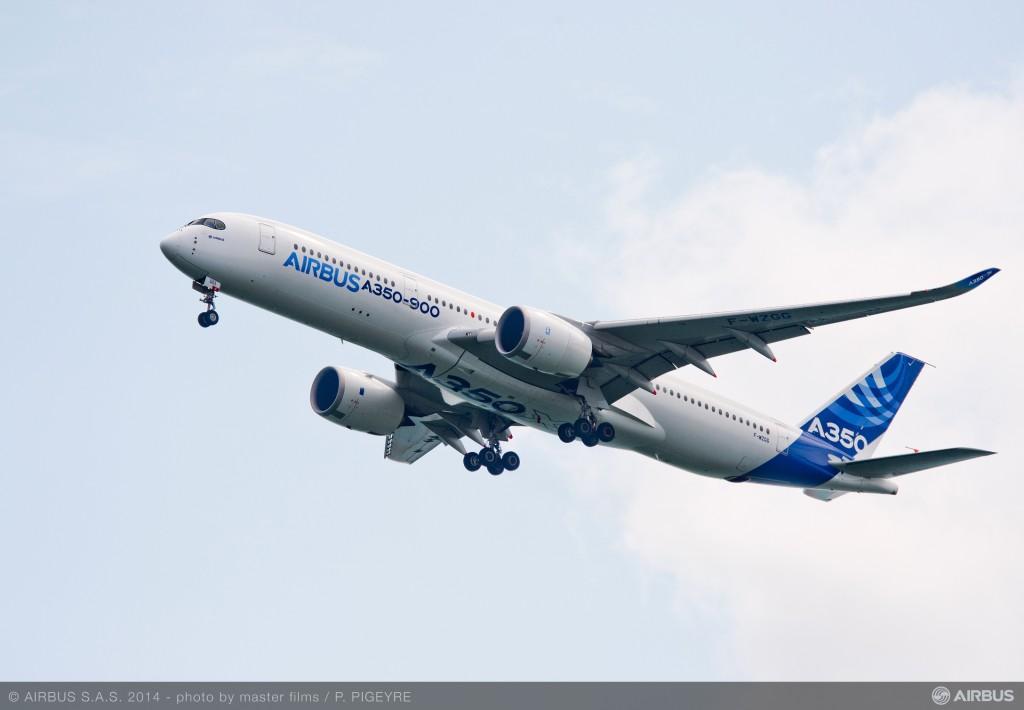Said now to be ‘among the best,’ Frank Herzog has had the great honor of being chosen as a finalist of the Deutscher Zukunftspreis (German Future Prize) 2015, with a Federal President’s Award for Innovation and Technology nomination.
This is just another feather in the cap for Germany-headquartered Concept Laser GmbH, with Herzog being highlighted for outstanding service in ‘initiative’ for 3D printing with metal, as well as offering an ‘innovation location.’ Nominees are being assessed by ten experts from science and industry, with the winner being endowed with €250,000. The award will be given in Berlin on December 2nd, 2015.
“After the awards in 2014 (e.g. Bavaria’s Best 50) and the Final of the German Industry’s Innovation Award, this nomination is a great honor to me,” said Frank Herzog. “Not least, it is also appreciation of the enormous potential of the LaserCUSING process developed by me.”
The LaserCUSING process for which Herzog is being recognized works through a fusing process. 3D CAD data is then used for 3D printing. Creating mechanical, thermally stable 3D printed pieces, the process allows for great accuracy and precision and can be used with:
- Stainless and tool steel
- Aluminum and titanium alloys
- Nickel-based superalloys
- Cobalt-chromium alloys
- Gold and silver alloys
Concept Laser has created a patented process that uses stochastic control of the slice segments–or islands–significantly reducing tension as pieces are processed one after the other.
 A recent project, titled ‘3D Printing in Civil Aircraft Manufacturing – a Production Revolution is Taking Off’ was responsible for earning Herzog the nomination.
A recent project, titled ‘3D Printing in Civil Aircraft Manufacturing – a Production Revolution is Taking Off’ was responsible for earning Herzog the nomination.
The project team consisted of Peter Sander, Head of Emerging Technologies and Concepts at Airbus, Hamburg; Prof. Dr. Ing. Claus Emmelmann, CEO of Laser Zentrum Nord GmbH, Hamburg; and Frank Herzog, founder and CEO of Concept Laser GmbH.
The main context of the project is in regards to a titanium component that was 3D printed and meant to serve as a bracket on an Airbus A350 XWB. Used as a connector, it’s referred to as a bionic device, and is a crucial piece. They would not be able to make the current piece, weighing thirty percent less than the traditionally milled piece, without the help of 3D metal printing.
“Materials produced using laser additive manufacturing have greater rigidity while, at the same time, less ductility; however this can be enhanced with the right heat treatment,” said Prof. Dr.-Ing. Claus Emmelmann.
While the aerospace industry is an obvious choice for this process, as evidenced by the project, it also shows great potential in the automotive industry, as well as the dental and medical arenas, and the tool and machine tool industry.
 Within aerospace currently, as with the components they have built so far, the fact that they have such latitude in design and development, as well as speed and affordability, makes the process undeniably better–and very attractive in manufacturing all around. With metal 3D printing, manufacturers are able to make fine, porous like structures which allow for lighter weight.
Within aerospace currently, as with the components they have built so far, the fact that they have such latitude in design and development, as well as speed and affordability, makes the process undeniably better–and very attractive in manufacturing all around. With metal 3D printing, manufacturers are able to make fine, porous like structures which allow for lighter weight.
“Previously we budgeted around six months to develop a component – now, it’s down to one month,” says Peter Sander, Head of Emerging Technologies & Concepts, Airbus, Hamburg.
“Initial prototypes indicate great potential of a bionically motivated approach. The process is expected to launch something of a paradigm shift in design and production,” said Sander.
Discuss Herzog’s process in the LaserCUSING forum on 3DPB.com.
 There’s also a shift in environmental benefit with LaserCUSING, known as a green technology. Due to less energy being used and conservation of resources, a much smaller footprint is produced. Parts can also be made much more ‘on demand,’ allowing for less resources used all around, as well as offering easy maintenance.
There’s also a shift in environmental benefit with LaserCUSING, known as a green technology. Due to less energy being used and conservation of resources, a much smaller footprint is produced. Parts can also be made much more ‘on demand,’ allowing for less resources used all around, as well as offering easy maintenance.
Considering enormous costs in material and production that usually play a factor in industries such as aerospace and automotive, the LaserCUSING technology is obviously appealing and shows great potential for improvement over traditional practices.
[All photo credits: Concept Laser]Subscribe to Our Email Newsletter
Stay up-to-date on all the latest news from the 3D printing industry and receive information and offers from third party vendors.
You May Also Like
Profiling a Construction 3D Printing Pioneer: US Army Corps of Engineers’ Megan Kreiger
The world of construction 3D printing is still so new that the true experts can probably be counted on two hands. Among them is Megan Kreiger, Portfolio Manager of Additive...
US Army Corps of Engineers Taps Lincoln Electric & Eaton for Largest 3D Printed US Civil Works Part
The Soo Locks sit on the US-Canadian border, enabling maritime travel between Lake Superior and Lake Huron, from which ships can reach the rest of the Great Lakes. Crafts carrying...
Construction 3D Printing CEO Reflects on Being Female in Construction
Natalie Wadley, CEO of ChangeMaker3D, could hear the words of her daughter sitting next to her resounding in her head. “Mum, MUM, you’ve won!” Wadley had just won the prestigious...
1Print to Commercialize 3D Printed Coastal Resilience Solutions
1Print, a company that specializes in deploying additive construction (AC) for infrastructure projects, has entered an agreement with the University of Miami (UM) to accelerate commercialization of the SEAHIVE shoreline...































